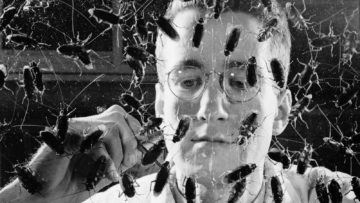Thomas Moynihan in Science:
 It is 1919, and a young astronomer turns a street corner in Pasadena, California. Something seemingly humdrum on the ground distracts him. It’s an ant heap. Dropping to his knees, peering closer, he has an epiphany – about deep time, our place within it, and humanity’s uncertain fate. The astronomer was Harlow Shapley. He worked nearby at Mount Wilson Observatory: peering into space. With help from colleagues like Henrietta Leavitt, Annie Jump Cannon, and Cecilia Payne-Gaposchkin, Shapley went on to “measure” the Milky Way. Their work revealed that we don’t live at our galaxy’s centre, and that there are many other galaxies besides.
It is 1919, and a young astronomer turns a street corner in Pasadena, California. Something seemingly humdrum on the ground distracts him. It’s an ant heap. Dropping to his knees, peering closer, he has an epiphany – about deep time, our place within it, and humanity’s uncertain fate. The astronomer was Harlow Shapley. He worked nearby at Mount Wilson Observatory: peering into space. With help from colleagues like Henrietta Leavitt, Annie Jump Cannon, and Cecilia Payne-Gaposchkin, Shapley went on to “measure” the Milky Way. Their work revealed that we don’t live at our galaxy’s centre, and that there are many other galaxies besides.
A lifelong advocate of progressive causes, Shapley also reflected regularly upon humanity’s long-term future, alongside the risks jeopardising it. He was among the first to suggest, during a lecture given while World War Two raged, that humanity should learn the lesson from 1918’s pandemic and prepare properly for the next one. Instead of battling each other, he prescribed a “design for fighting” the risks facing all of humanity: declaring war on the gamut of evils, from pandemics to poverty, endangering the whole globe. (Only two audience members applauded; it appears we didn’t take heed.)
More here.
